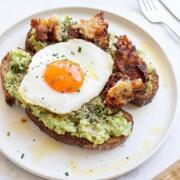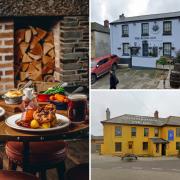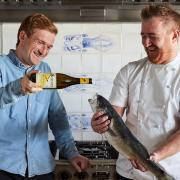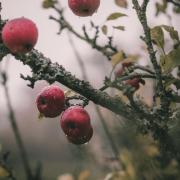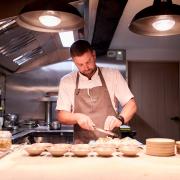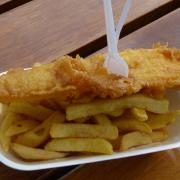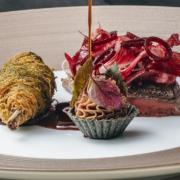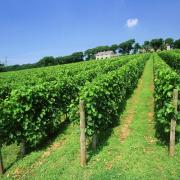We reveal all the secrets of the pasty, in honour of last month's Cornish Pasty World Championships 2022.
There are few things more synonymous with Cornwall than the beloved pasty, which is why it was welcome news that the World Pasty Championships returned this year.
Taking place on Saturday, March 5 at the Eden Project, the 10th anniversary event saw the best pasty-makers battle it out once again for the top accolades.
“The World Pasty Championships in any year is a fantastic opportunity to celebrate something that is so important to Cornwall, and to so many people’s livelihoods in the county, but this year is especially important in so many ways,” said Jason Jobling, chair of the Cornish Pasty Association, which oversees the event.

“Firstly, it’s exciting to be back after the enforced break last year; secondly, it’s an opportunity to reflect on the way the event has grown over its 10 years, from something intended to create a bit of fun, into something with an international reputation.
“However, this is also the first time the day has fallen on St Piran’s Day itself and to be able to celebrate Cornwall’s iconic food on the day that means so much to Cornish folk around the world is something we’re very excited about.”
At the previous event in 2020, a team of 40 judges were tasked with assessing almost 200 pasties entered across the company, professional, amateur and junior categories divided into two sections.
The first of those is devoted to Cornish pasties, which requires that the pasties are made in Cornwall and follow a traditional recipe, with winners from 2020’s event including Cornish Pasty Company and David Timmins from St Columb Road.
The other section is Open Savoury, which allows competitors to have free rein over their creative fillings. Rowe’s Cornish Bakery won the company category in 2020 with a chicken, leek, potato, and onion pasty, while Nick Brown of Liskeard earned the top professional accolade with a ham hock, cheddar, and apple chutney combination.

The day isn’t just about honouring the best in the industry though, it’s an opportunity to celebrate the pasty itself, and the continued impact it has on the county.
For the pasty’s not just a go-to snack for locals, but a must-try for holidaymakers, and at least 120 million Cornish pasties are produced each year to meet demand. This generates around £300million worth of trade a year, equating to around 20 per cent of the total turnover of Cornwall’s food and drink sector.
“The industry has been incredibly busy this past year, not only because of the influx of tourists to Cornwall but also because of the change in eating habits, with more people choosing takeaways and eating outside. The pasty meets that need perfectly,” remarks Jason.
Imitation might be seen as the sincerest form of flattery, but it was the number of inferior copycats being sold as the real deal that prompted the creation of the Cornish Pasty Association. “It was a means of bringing the industry together to achieve the PGI (Protected Geographical Indication), and since that was granted in 2011, the association’s aim has been to build awareness,” says Jason.

Research published in 2019 found the Cornish pasty was the most well recognised protected food in the UK, ahead of Jersey Royal potatoes and Scotch whisky but Jason highlights the association’s campaigns and activities “are only successful because of the amount of love and pride that exists, not just in Cornwall but around the globe, for the Cornish pasty.”
“The CPA is really proud of what it has achieved. It’s the nation’s go-to organisation on protected foods and has done so much for the reputation of our industry and Cornwall. Now we want to build on that success.”
A common myth
“We’re often asked about the complete meal in a pasty, with the savoury filling ate on end and a sweet (usually apple) filling at the other. But we have never been able to find hard evidence that this existed and have also found it very difficult to recreate. It just doesn’t work!” says Jason. But the Cornish Pasty Association welcomes the wide variety of fillings available these days.
“Obtaining the PGI was never intended to suggest the genuine Cornish pasty filling is the only possible filling; it was to make sure that pasties that aren’t made in Cornwall to the genuine Cornish pasty recipe couldn’t be passed off as such. It’s good the industry can keep evolving to keep up with lifestyle changes, for example, gluten-free and vegan pasties have both increased in popularity in recent years, while maintaining traditions.”
Did you know…
- The Oxford English Dictionary suggests the pasty was identified around 1300, the word originating from the Medieval French paste - a pie baked without a dish.
- By the 18th century, the pasty was firmly established in Cornwall as a food eaten by poorer working families, although meat would’ve been a scarce luxury.
- Tin miners in the 19th century would take the durable and portable pasty with them for lunch, but it’s disputed as to whether they’d treat the chunky crust as a handle to avoid contamination, or enjoy the whole thing as we do today.
- On average, a skilled crimper will crimp three or four pasties a minute.
- If a pasty’s crimped by a left-hander, it’s called a cock pasty, and by a right-hander, it’s a hen pasty.
- The ‘Oggy, oggy, oggy’ chant is believed to have originated from pasty sellers or tin miners’ wives announcing the arrival of their freshly baked wares.
- To call it a genuine Cornish pasty, there must be at least 12.5% beef and 25% vegetables in the whole pasty, and all the ingredients uncooked when it’s assembled.

How to make your own genuine Cornish pasty
For the shortcrust pasty: (rough puff can also be used)
500g strong bread flour (it is important to use a stronger flour than normal as you need the extra strength in the gluten to produce strong pliable pastry)
120g lard or white shortening
125g Cornish butter
1 tsp salt
175ml cold water
For the filling:
400g good quality beef skirt, cut into cubes
300g firm, waxy potato (Maris Piper, Wilja), peeled and diced
150g yellow-fleshed swede/turnip, peeled and diced
150g onion, peeled and sliced
Salt & pepper to taste (2:1 ratio)
Beaten egg or milk to glaze
Method:
1.Add the salt to the flour in a large mixing bowl.
2.Rub the two types of fat lightly into flour until it resembles breadcrumbs.
3.Add water, bring the mixture together and knead until the pastry becomes elastic. This will take longer than normal pastry, but it gives the pastry the strength that is needed to hold the filling and retain a good shape. This can also be done in a food mixer.
4.Cover with cling film and leave to rest for 3 hours in the fridge. This is a very important stage as it is almost impossible to roll and shape the pastry when fresh.
5.Roll out the pastry and cut into circles approx. 20cm diameter. A side plate is an ideal size to use as a guide.
6.Layer the vegetables and meat on top of the pastry, adding plenty of seasoning as you go. The amount of salt and pepper to use will vary according to taste but a good rule of thumb is to use a good pinch of salt and a gentle pinch of pepper on each layer.
7.Bring the pastry around and crimp the edges together.
8.Glaze with beaten egg or an egg and milk mixture.
9.Bake at 165 degrees C (fan oven) for about 50 to 55 minutes until golden.
Recipe from Cornish Pasty Association. Visit cornishpastyassociation.co.uk for extra tips, including how to crimp.




